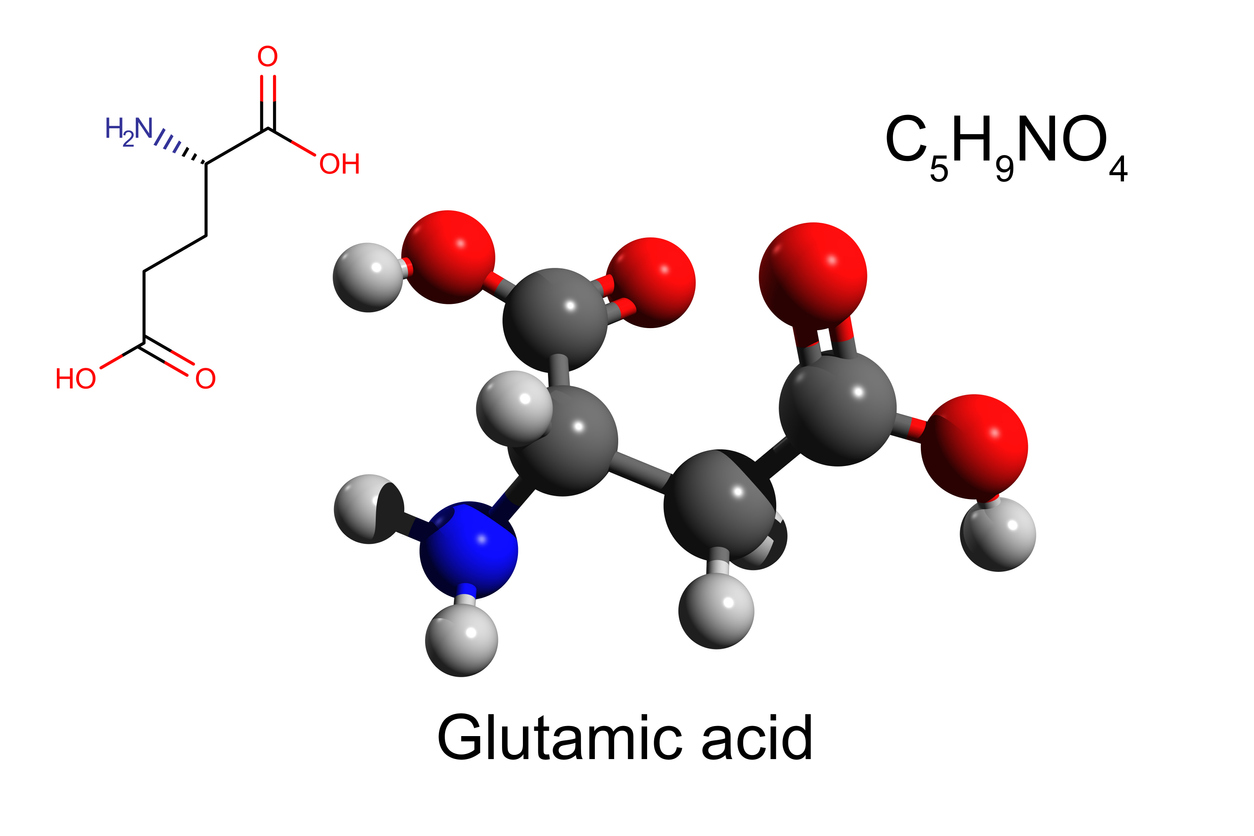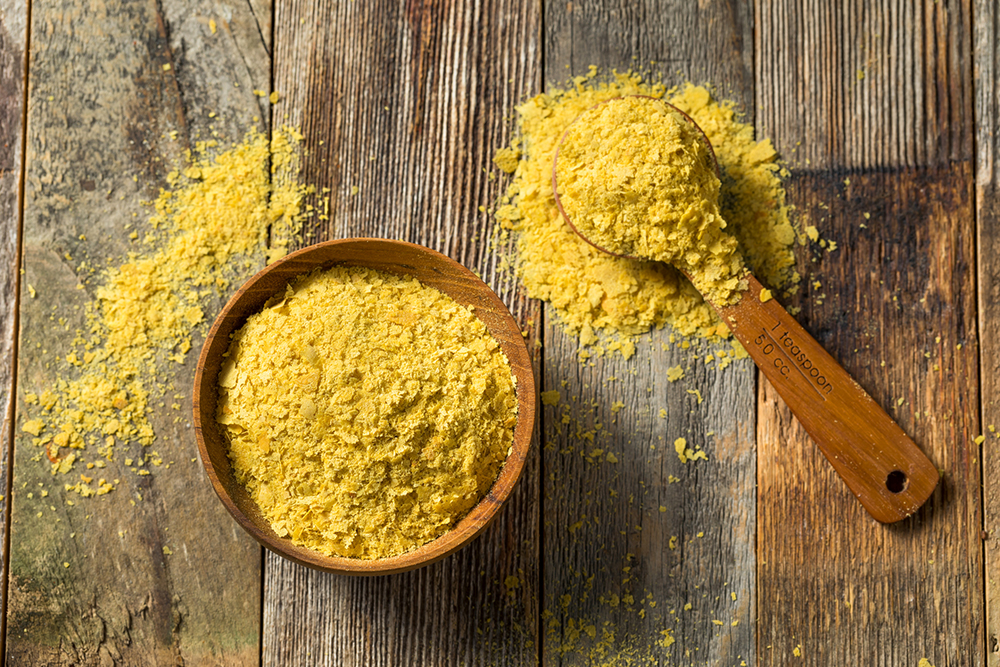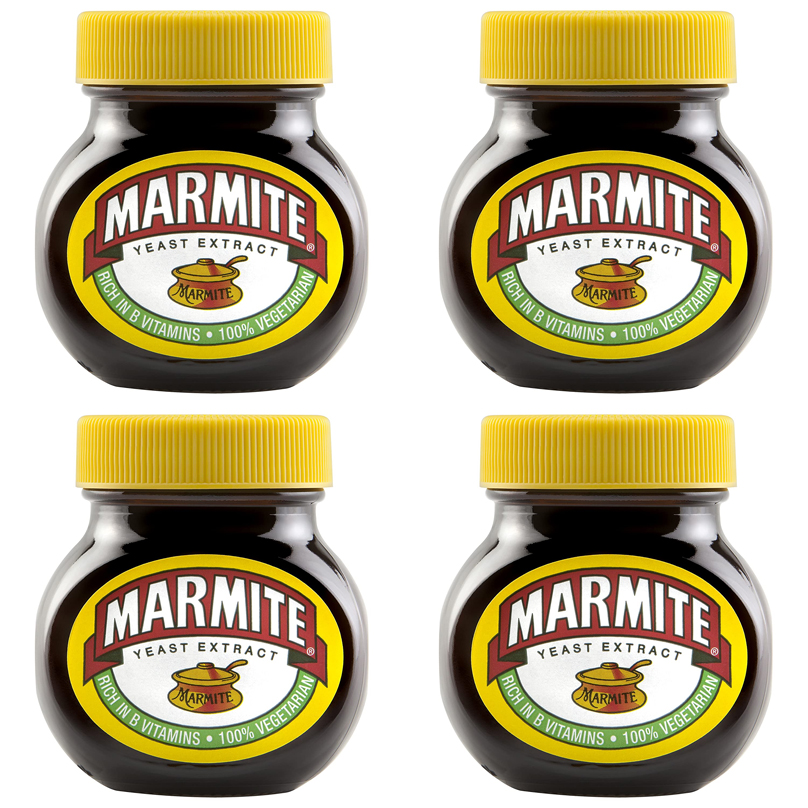Adrienne Samuels, Ph.D., March, 2022
NOTE: Studies confirming that the free glutamate in MSG causes brain damage, intractable obesity, infertility and more were done before it was understood that excitotoxic free glutamate would be found in ingredients other than MSG.
Introduction
Obesity is the excessive or abnormal accumulation of fat or adipose tissue in the body that impairs health through its association with numerous serious diseases and health conditions. It is a public health epidemic with an economic burden estimated to be about $100 billion annually in the United States alone (1).
According to the Centers for Disease Control and Prevention (CDC), those who are obese, compared to those with a healthy weight, are at increased risk for many serious diseases and health conditions, including the following:
- All-causes of death (mortality)
- High blood pressure (hypertension)
- High LDL cholesterol, low HDL cholesterol, or high levels of triglycerides (Dyslipidemia)
- Type 2 diabetes
- Coronary heart disease
- Stroke
- Gallbladder disease
- Osteoarthritis (a breakdown of cartilage and bone within a joint)
- Sleep apnea and breathing problems
- Many types of cancers
- Low quality of life
- Mental illness such as clinical depression, anxiety, and other mental disorders
- Body pain and difficulty with physical functioning (2).
There are countless factors that contribute to obesity, but only one that by itself can explain the ongoing obesity epidemic:the fact that excitotoxic amino acids (EAA) ingested by pregnant women are passed via the placenta to their fetuses where they cause brain lesions in the arcuate nucleus – brain damage that is followed by gross obesity as these children approach maturity.
A series of studies from 1969 and the decade that followed demonstrated that three conditions had to be met in order to produce food-induced neurotoxicity:
- A vulnerable brain (immature or damaged).
- A sufficient quantity of excitotoxic material to cause that material to become excitotoxic.
- A way for that excess material to be delivered to the vulnerable brain.
Damage caused by manufactured free glutamate delivered by pregnant women to the vulnerable brains of their fetuses meets all three of these conditions. A sufficient quantity of excitotoxic material became available and accessible in 1957 when vast amounts of free glutamate began to appear in processed food.
Glutamate
Undisputed is the fact that there are high concentrations of glutamate in the brain. When present in protein or released from protein in a regulated fashion (through routine digestion) glutamate is vital for normal body function. Glutamate is the principal neurotransmitter in humans, carrying nerve impulses from glutamate stimuli to glutamate receptors throughout the body.
Disputed by some producers of free glutamate is the assertion that glutamate is an excitotoxic amino acid. This Jekyll and Hyde amino acid becomes toxic when present in greater quantity than a healthy human needs for normal body function. Then, as an excitotoxic neurotransmitter, it fires repeatedly, damaging targeted glutamate receptors and/or causing neuronal and non-neuronal death by over exciting those glutamate receptors until their host cells die (3-8).
Glutamate-induced brain damage
The first study to address the possibility that glutamate from exogenous sources (from eating, for example) might cause brain damage was published in 1969. At the time, it was demonstrated that glutamate-induced brain damage to the arcuate nucleus of the hypothalamus of neonatal animals was followed by obesity, reproductive dysfunction, behavioral disturbances and more (9). In the decade that followed, research confirmed that glutamate given as monosodium glutamate administered or fed to neonatal animals causes hypothalamic damage, endocrine disruption, and behavior disorders after either subcutaneous (10-31) or oral (17,23,24,26,32-36) doses.
Developmental dysfunction or abnormalities in growth and behavior were also noted in a number of studies. Animals treated with glutamate as neonates or in the first 12 days of life suffer neuroendocrine disturbances including obesity and stunting, abnormalities of the reproductive system, and underdevelopment of certain endocrine glands (9,18,20,36,37-54) and possible learning deficits either immediately or in later life (40,43,44,55-61).
In addition, Bhagavan and others reported behavioral reactions including somnolence and seizures (62-69; tail automutilation; (42,56) and learned taste aversion (58). Irritability to touch was interpreted as conspicuous emotional change by Nemeroff (42). Lynch (70) reported hyperglycemia along with growth suppression. He noted that hyperglycemia did not occur when subjects were given intact protein that contained a large amount of glutamate.
Since the 1980s, researchers have focused on identifying and understanding human abnormalities associated with free glutamate, often for the purpose of finding drugs that would mitigate glutamate’s adverse effects. Invariably, those have been studies of the glutamate from endogenous sources. The possibility that glutamate from exogenous sources might contribute to those abnormalities and/or might cause brain damage in humans leading to gross obesity, was not considered.
The case for the safety of MSG
Brain lesions
In the 1960s and 1970s, research done by people not employed by the glutamate industry demonstrated that monosodium glutamate fed to laboratory animals causes brain lesions, endocrine disorders, and observable adverse reactions.
In response, glutamate-industry researchers pretended to replicate those animal studies; but changed the methodology enough to make certain that there would be nothing negative to report.
These investigators made no attempt to replicate the methods of the independent scientists, and used entirely different (and inappropriate) methods for preservation and staining brain tissue in the analysis of results.
On occasion, I had the privilege of visiting with John W. Olney, MD, the man who coined the term “excitotoxin” to describe the effects he had seen free glutamate have on neonatal animals. And while he didn’t dwell on criticizing the research of others, he was generous in answering my questions. He told me that when he first found that glutamate (given as MSG) caused brain damage in infant mice, he searched out or was put in touch with Dr. W. Ann Reynolds, and either Reynolds or someone sent by Reynolds spent a great deal of time in Olney’s laboratory, learning the detail of how his experiments had been conducted. By and large, it was Reynolds and coworkers Filer, Stegink, and Lemkey Johnson who failed to replicate Olney’s findings. Other industry scientists producing similar results using similar methodology were affiliated with laboratories that did contract work for the glutamate industry.
Adverse reactions
Glutamate-induced adverse reactions may or may not involve the brain. There has been no study of that issue. But since the subject of this paper is glutamate-induced obesity second to brain damage caused by glutamate ingested in quantity by pregnant women and passed to fetuses through the placenta, the subject of glutamate-induced adverse reactions has not been considered.
Establishment of excess MfG
It is necessary for a substantial amount of free glutamate to be ingested for that free glutamate to become excitotoxic. For glutamate to be excitotoxic, there must be an accumulation of free glutamate greater than needed for normal body function.
In 1957, bacterial fermentation was introduced as a new and improved method for production of free glutamate for use in food. From that point forward, with genetically modified bacteria secreting free glutamic acid through their cell walls, unlimited production of free glutamic acid was virtually assured (71).
It wasn’t long before competing manufacturers added dozens more excitotoxic food additives to the American diet. Following MSG’s surge in production and its manufacturer’s aggressive advertising, there was broad recognition that profits could be increased if a company produced its own flavor-enhancing additives. Since that time, the market has been flooded with flavor enhancers and protein substitutes that contain manufactured free glutamate such as hydrolyzed pea protein, yeast extracts, maltodextrin and soy protein isolate, as well as MSG.
Although there have been studies that mention the fact that there are substantial amounts of free glutamic acid in processed food (72-80) there has been no systematic study. There are, however, numerous market reports with promotional materials that speak of manufactured glutamate history and forecast. Market reports for monosodium glutamate focus on that commodity. Market reports for glutamic acid generally take into account all flavor enhancers (81-87).
You only have to compare the ingredients listed on the labels of processed and ultra-processed foods to a list of the hidden sources of manufactured free glutamate to realize just how much manufactured free glutamate there is in the food supply. Table 1 lists the food ingredients that contain free glutamate as an ingredient or a constituent of an ingredient. By virtue of the fact that ultra-processed foods are typically made with inferior foods and/or chemicals, every ultra-processed food contains flavor-enhancers, which will contain manufactured free glutamate regardless of the ingredient names on the labels describing those ingredients.
Today, there is sufficient excitotoxic free glutamate in processed foods, dietary supplements, snacks, protein powders and protein drinks, protein substitutes, fake meat, enteral care products, and pharmaceuticals for a person to consume in a day’s time the quantity necessary for that free glutamate to become excitotoxic. Only a portion of that comes in an ingredient called monosodium glutamate or E621.
Since the 1957 change in method of MSG and manufactured free glutamate production, there are so many products that contain excitotoxic ingredients that it is easy for a consumer to ingest an excess of excitotoxic material during the course of a day.
Effective delivery of excitotoxic free glutamate: A way for that excess of glutamate to be delivered to the vulnerable brain.
Effective delivery of excitotoxic free glutamate would depend in large part on the integrity/health of the brain to which it is being delivered.
In children and adults with mature brains, delivery can be accomplished by providing the subject with free glutamate to ingest in sufficient quantity to cause it to be excitotoxic.
Delivery of excitotoxic free glutamate to a fetus and/or neonate will be accomplished when a pregnant or lactating female passes excess free glutamate to a fetus or neonate through the placenta or in mothers’ milk.
Nourishment (and not so nourishing material) is delivered to the fetus in the form of material ingested by a pregnant woman and passed to the fetus through the placenta. MSG can cross the placenta during pregnancy (88-90), can cross the blood brain barrier (BBB) in an unregulated manner during development (91-94), and can pass through the five circumventricular organs which are leaky at best at any stage of life (92,95). Glutamate is an ingredient that passes to the fetus. The placenta does not filter out glutamate (88). Moreover, the BBB is easily damaged by fever, stroke, trauma to the head, seizures, ingestion of MSG, and the normal process of aging (66,96).
And the fetus will be more vulnerable to glutamate-insult than the newborn.
Similar to drugs and alcohol, free glutamate can also be passed to infants through mothers’ milk. Newborn humans will receive glutamate through mothers’ milk or through infant formula, both of which routinely contain free glutamate (97).
The glutamate in mothers’ milk, however, will not be excitotoxic unless lactating mothers ingest excessive quantities of free glutamate – quantities sufficient to cause free glutamate to become excitotoxic.
Onset of the obesity epidemic
According to the Surgeon General’s “Vision for a Healthy and Fit Nation,” the prevalence of obesity changed relatively little during the 1960s and 1970s, but increased sharply over the ensuing decades (98).
That information is consistent with information that comes from the National Health and Nutrition Examination Surveys (NHANES) which periodically collect measured height and weights in representative samples of the population. The first records of weight came from the CDC’s 1960-1962 report with subsequent reports confirming that the prevalence of obesity among adults more than doubled between 1976-1980 and 2007-2008 (99).
Summary and conclusions
We have briefly discussed excitotoxicity, the phenomenon underlying the obesity epidemic, drawing attention to the fact that a possible role for excitotoxins from exogenous sources has not previously been considered.
We have reviewed the studies that present evidence of glutamate excitotoxicity. Underscoring the recognition that glutamate-induced brain damage leads to obesity, is the fact that since 1980, it has been common practice to use monosodium glutamate or glutamic acid to produce brain-damaged obese animals for use in studies of various glutamate-related abnormalities.
We have described the way in which excitotoxic free glutamate can be delivered by pregnant women to fetuses and neonates, causing brain damage and subsequent obesity.
The single challenge to the assertion that the brains of the fetus and neonate are vulnerable to the toxic effects of glutamic acid from exogenous sources has been mounted by the International Glutamate Committee (IGTC) based on a paper Richard Hawkins presented in September 2008 at the IGTC’s 100th Anniversary Symposium of Umami Discovery: “The Roles of Glutamate in Taste, Gastrointestinal Function.”
In 1969, the IGTC was organized to represent the interests of Ajinomoto, the U.S. producer of MSG and manufactured free glutamate. Hawkins received both travel expenses and an honorarium from the IGTC, and acknowledged the sharing of ideas and advice from Andrew Ebert, Ajinomoto’s agent in charge of providing test and placebo materials to their researchers doing double-blind studies on the safety of MSG. It was Ebert who provided his researchers with placebos containing aspartic acid, an excitotoxic amino acid known to cause adverse reactions and brain damage identical to that caused by the excitotoxic glutamic acid in MSG test material.
Without taking into consideration the unique properties of an immature brain, Hawkins asserted that the human brain is impervious to glutamate damage.
It has been demonstrated that following the 1957 modernization of glutamate production, there has been sufficient free glutamate available and accessible in processed and ultra-processed foods to cause accumulated glutamate to become excitotoxic.
From National Health and Nutrition Examination Surveys (NHANES) documenting the prevalence of overweight, obesity, and extreme obesity, we have observed increased incidence of obesity dating from 1960, as well as the demonstration of racial disparities. In the 2012 article “The Nation’s childhood obesity epidemic: Health disparities in the making,” Suzanne Johnson makes a case for the obesity epidemic being, in part, a product of an environment that promotes overeating — over time having changed the type and quantity of food we eat. She cites less time for in home food preparation, the consumption of a plethora of fast food and convenience food, and the fact that fast-food restaurants are more common in ethnic minority neighborhoods (100).
The reader has only to connect the dots between 1) the vulnerable brain of the fetus and neonate receiving excitotoxic amino acids in processed and ultra-processed food, and 2) the fact that prior to the surge in production of glutamic acid triggered by the modernization of manufacture of the glutamic acid in MSG, there was no obesity epidemic. Then trace the unfolding of the obesity epidemic from reformulation of free glutamate in 1957 to the early 1970s when those made obese by the influx of free glutamate began to become noticeable.
Thus, it has been demonstrated that obesity can be caused by excitotoxic amino acids ingested by pregnant and/or nursing women and delivered to fetuses and neonates who exhibit obesity as they reach maturity.
No discussion would be complete without considering why this information has not been discussed previously by others. With the first suggestion that MSG might have toxic potential, those with financial interest in promoting MSG as a valuable flavor-enhancer launched well-funded, well-articulated campaigns to promote their product and deny its toxicity. That included rigging studies to come to the foredrawn conclusion that MSG is a harmless food additive and securing the active cooperation of regulators as well as the help of medical professionals (101).
That might account for the fact that to date, the roles of MSG and manufactured free glutamate in the obesity epidemic have been overlooked.
Recognition of the fact that glutamate-induced brain damage in fetuses and neonates lies at the root of the obesity epidemic should serve as a valid starting point for new ground-breaking research. It should put an end to the shame and blame that have long been associated with obesity, and facilitate appropriate counseling and medical interventions for those who are afflicted.
Excitotoxic amino acids delivered to fetuses and neonates by pregnant and nursing women should be included as recognized risk factors for obesity.
References can be found here.










